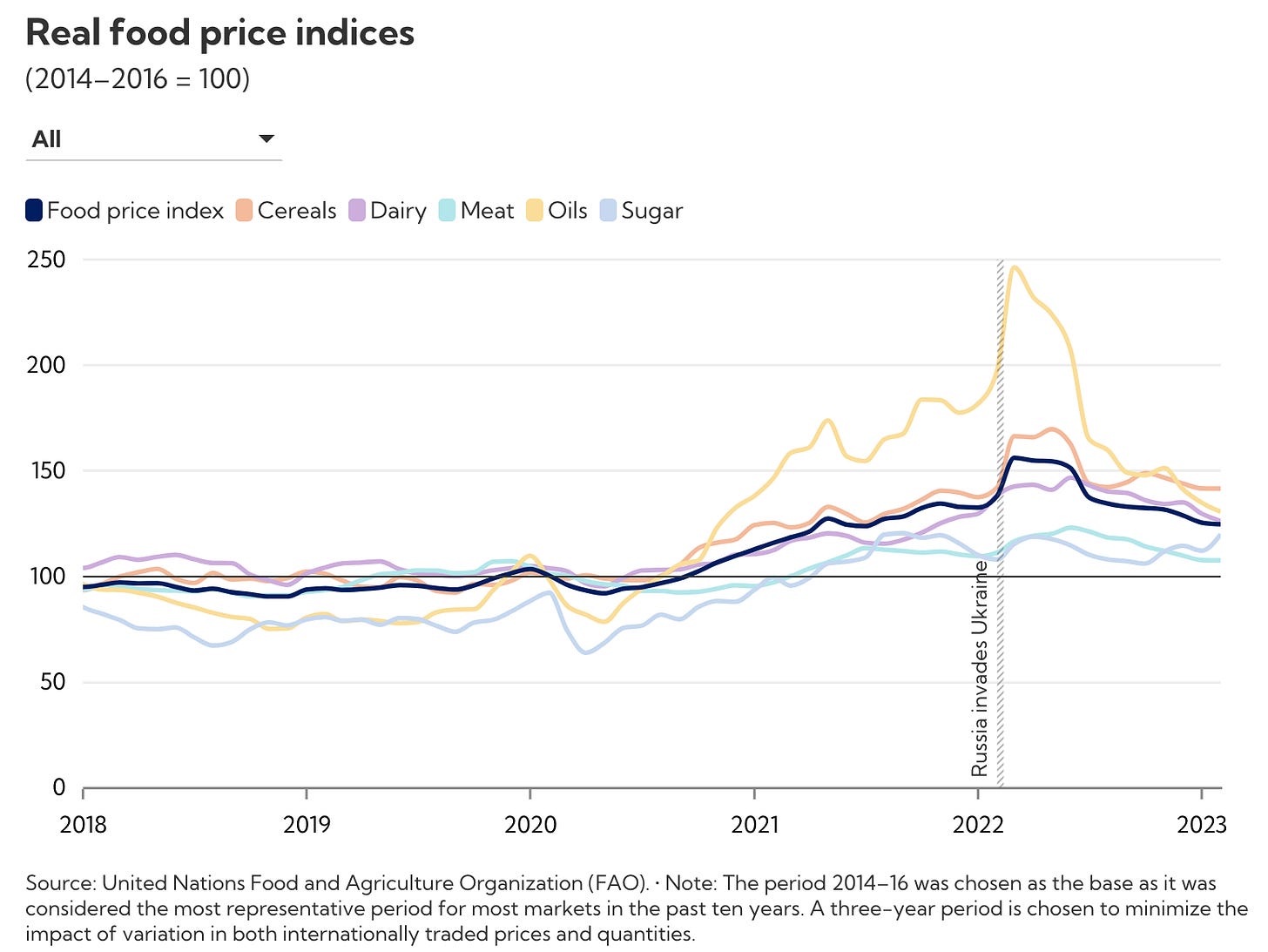How can we make our global food systems more resilient?
Getting sufficient, nutritious food around a world beset by climate change.
Food.
Everyone in the world needs it to live. With the global population projected to top 10bn by 2050, scientists estimate we will need to increase global food harvests by 70%.
But the situation around the world is quite dire.
The World Food Programme estimates that more than 333mn people are currently food insecure, and do not know where their next meal will come from. UNICEF notes that since 2019 over 122mn more people are experiencing hunger around the world, and around 2.4bn did not have access to nutritious, safe and sufficient food in 2022.
How can we make our food systems more resilient so people around the world get sufficient, nutritious food? A combination of open trade and diversifying production, utilizing the latest technology and collaborating across stakeholders can help light the path to a more sustainable food system.
Why it is important to keep trade open, in three acts
As we collectively encounter more geopolitical tensions and changing weather patterns, diversifying the food supply is critical to ensuring a robust, resilient food system.
Act 1: The cautionary tale - Russia invades Ukraine and protectionism begets food shortages
Russia’s invasion of Ukraine, the “breadbasket of Europe”, threw the global food system into chaos. In the first half of 2022, Russian bans on wheat and corn directly contributed to the large global price hikes. In less than six months, the price of wheat went up 34% and around 30 countries had restricted food and fertilizer exports (while at the same time easing import restrictions, hoping to lure more food imports).
Active trade policies on food

And then much political capital was expended to allow Ukraine to continue shipping grain out of its ports, but at this point prices stayed elevated.

Understanding that the Russia/Ukraine war is a unique situation, an open trade policy is important to warding off inflation. Export restrictions generally make food more difficult to find, and more expensive. Research conducted after the 2008 financial crisis found that prices would have been 13% lower if exporters had not put restrictions in place. And while obviously there were other contributing factors to our recent bout of inflation, we have witnessed first-hand the impact of additional tariffs.
Act II: The disaster-in-waiting - Brexit
Another example of trade restrictions making life more difficult than necessary is everyone’s favorite new trade barrier, Brexit!
As part of the UK leaving the EU, additional border controls have been put in place, and food products are no exception. Checks to fresh food have been delayed a handful of times, but are now projected to start in the first quarter of 2024. The British government projects that these checks on animal and plant products will cost businesses £330mn each year. In the grand scheme of things, this isn’t a massive number, the UK’s GDP is around $3tn, but the additional administrative burden means additional time wasted where the food products will sit at port, reducing their shelf-life and potentially posing a safety-risk.
Act III: How changing weather patterns can shift supply chains - El Niño
Keep reading with a 7-day free trial
Subscribe to Nuance Matters to keep reading this post and get 7 days of free access to the full post archives.



